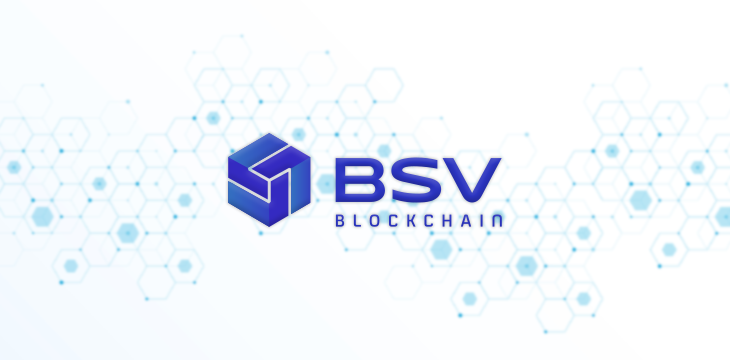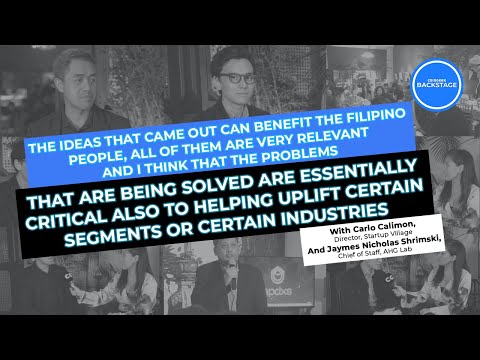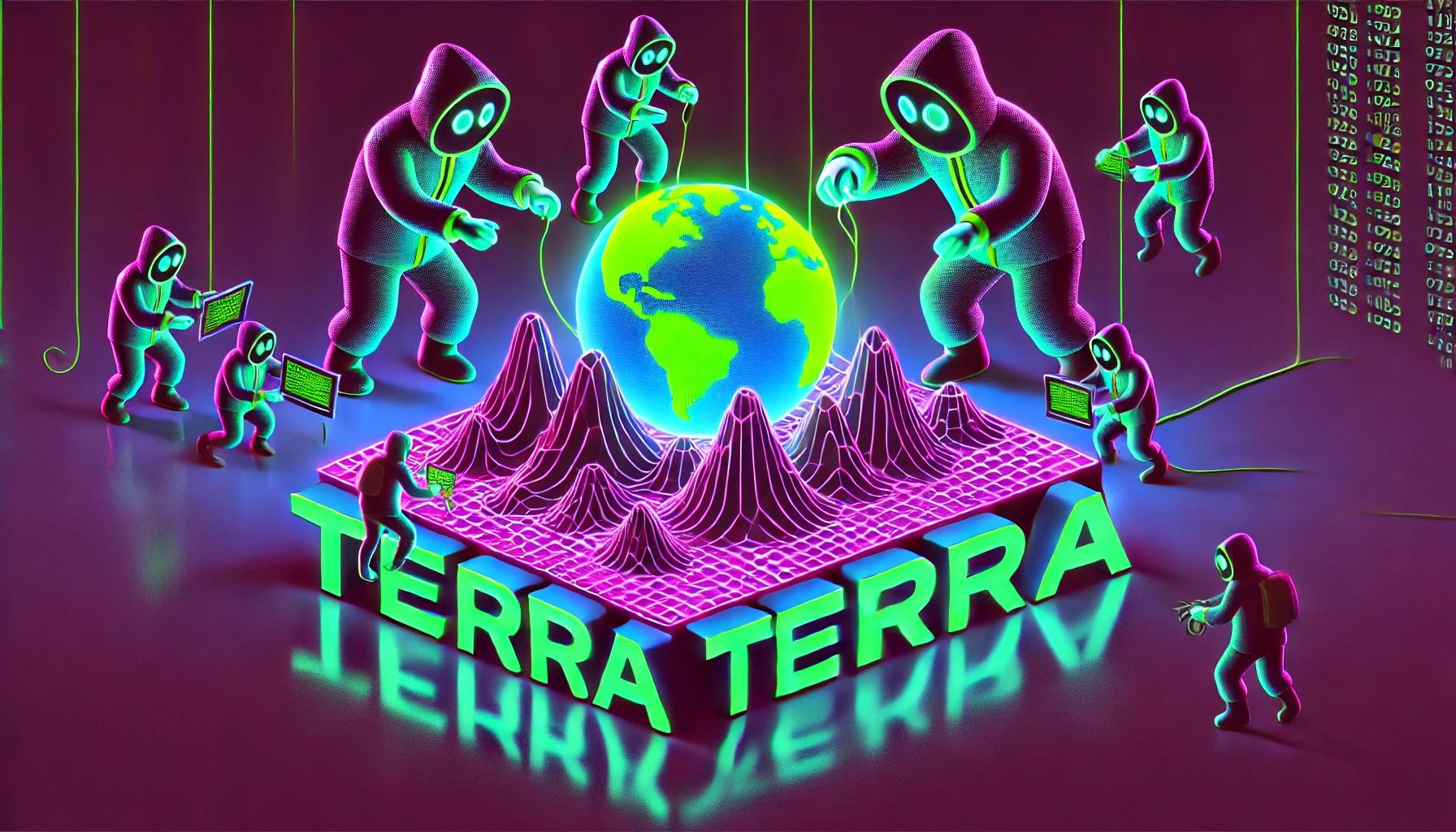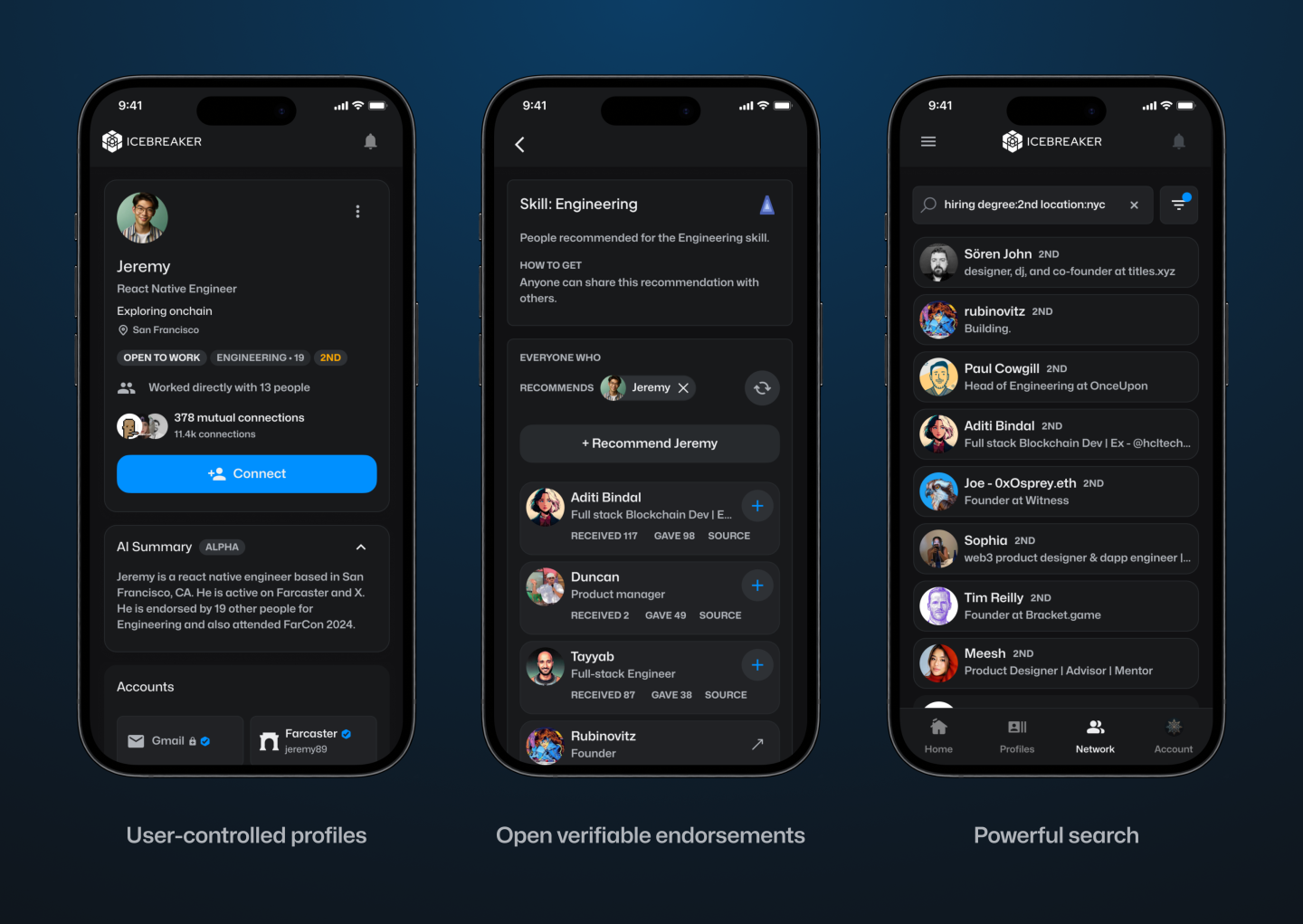News
BSV Blockchain: Building trust at scale

The BSV blockchain is a “secure and stable” peer to peer technology, designed for scalability and enterprise-level use cases, according to a new report by BSV’s Swiss-based custodian organization, the BSV Association, in collaboration with strategic management consulting firm Boston Consulting Group.
Titled “Navigating Digital Transformation: Building trust in an automated world,” the report outlined trust issues that the new digital age has created for businesses, how blockchain can address some of these issues, and real-world uses cases that demonstrate the advantages of applying the blockchain to the novel problems of life and enterprise in the age of artificial intelligence (AI), internet of things (IoT) and Web3.
In the last article in our series of deep dives into the report, we explore how and why the report posited BSV blockchain as the go-to technology to solve the trust problems of the new digital age whilst also looking at and hearing from a diverse range of businesses already utilizing the BSV blockchain.
Unique features
The report suggested that certain unique features of the BSV blockchain make it particularly well suited to the challenges of the new digital age and to adoption by enterprises. Specifically:
- Efficient scaling – The overlay networks and unbounded block size of BSV achieve 14,000 transactions per second (tps), and with the blockchain’s Teranode update, it seeks to reach more than one million plus tps. This would be “much faster than traditional payment processors such as Visa, who, by comparison, can execute only about 65,000 tps,” said BSV Association.
- Low transaction costs – The BSV blockchain offers a cost-efficient solution, with transaction fees as low as $0.0000006 (as of May 17, 2024). By comparison, the report suggested that Stripe, an online payment processing and credit card processing platform, has transaction fees of 1.5% to 3.25% of payment value plus a flat fee of $0.27.
- Resilience and reliability – According to the report, the BSV blockchain has been “reliably operating for more than 5 years and processed over 3.6 billion transactions.”
- Sustainability – On average, the BSV blockchain emits about 0.03kg of CO2 per transaction and consumes less than 500 MWh of energy daily. “This performance demonstrates greater energy efficiency compared to other Proof of Work (PoW) blockchains,” argued the report.
- Security – BSV blockchain is anchored in a “battle-tested” PoW mechanism and an unspent transaction output (UTXO)–based token model, this forms what the report called a “trustworthy and immutable blockchain architecture.”
- Regulatory compliance – BSV is, technically, not classified as a security and implements legal rules to govern its nodes.
On this latter point, the report quoted Cozen O’Connor legal firm, who said:
“The SEC has stated that Bitcoin is not a security under the federal securities laws in the United States due to its function as a substitute for fiat currency as a medium of exchange. The BSV Association maintains that BSV restored the Bitcoin protocol to its original design – and therefore its concept as a medium of exchange.”
The SEC comments were in reference to BTC. It has not commented on whether BSV is a security other than to suggest that all blockchains other than BTC are likely securities. However, considering what Cozen O’Connor pointed out, it may be fair to conclude that the SEC would not view BSV as a security.
As noted by the report, another key selling point of BSV is its scalability, and Teranode continues to up the stakes in this regard.
1 million transactions per second
Teranode, which began its initial six-month sustained test in January, is a major upgrade for BSV’s node software. It is designed to scale horizontally and provide new microservices for developers, applications, and users—while still following all the fundamental rules set forth in the Bitcoin white paper.
The Teranode upgrade, theoretically, allows the BSV blockchain to scale unboundedly, making it faster and cheaper for everyone to use.
“Teranode, a significant upgrade for BSV, supports 1 million transactions per second — more than 10 times the maximum theoretical transaction rate of Visa,” said the report.
“Uniquely, Teranode reduces transaction fees as usage increases, thanks to its ability to process more transactions in each block, efficiently spreading costs. This feature presents a clear economic advantage, particularly for high-volume businesses aiming to enhance efficiency and cut operational expenses.”
To show that such innovations as Teranode—as well as the various other unique features of BSV outlined—are not simply hypothetical, the report provided several examples and supporting testimonials from businesses currently employing the BSV blockchain.
8 companies explain why they use the BSV blockchain
Blockchain could provide innovative platforms for enterprises in every sector to support applications in AI, IoT, gaming, and more. In its report, the BSV Association made the case for how its namesake blockchain is already demonstrating this utility for a number of diverse enterprises.
Finance
Centi B2B Solutions uses the BSV blockchain to simplify stablecoin transactions, companies such as online payment platform Payrexx trust Centi to handle the transactions of its 50,000 clients. In addition, Centi has enrolled more than 250 merchants and recently achieved a milestone by processing more than one million micropayments in just 24 hours, each transaction amounting to one cent.
“For Centi, scalability is the most crucial element. And yes, this may also be achieved with Proof of Stake (PoS) protocols like Solana. But besides scalability, it was crucial for us to build our services on a protocol that has a granted legal classification as currency since otherwise, Centi’s business cases might be at risk when the underlying token is classified as a security,” said Centi, in a statement quoted in the report.
The report further argued that BSV’s platform is uniquely suited to support financial applications, like Centi, that require scalability and compliance compatibility.
Internet of Things
Rekord IOT is a hardware monitoring and analytics solution for IoT infrastructure, which uses the BSV blockchain to streamline data management and security for IoT devices, addressing critical issues in scalability and interoperability. The project has attracted funding and interest from major clients, highlighting its potential to transform IoT infrastructure on a large scale.
One of its key benefits is the storage and encryption of data from IoT sensors, which increases the trust, integrity, and security of IoT-generated data.
Supply Chain
Gate2Chain is a company building enterprise solutions which employs the BSV blockchain to increase transparency and efficiency in supply chain operations and solve traceability and security issues.
For example, its BSV blockchain-based platform Trace is designed to combat fraud and counterfeiting in the supply chain by providing digital twins and certification. The initiative has formed partnerships with large multinational corporations, including a significant collaboration with IBM in Poland.
In this case, the key benefit offered by the BSV blockchain is a transparent and immutable audit trail of supply chain-related activities for improved data trust and security.
The report quoted Bart Olivares, CEO at Gate2Chain, who said:
“The first reason why we chose BSV is the stability of the protocol. BSV is working with a locked protocol. We need stability in the protocol; otherwise, we need to change (our applications) all the time. The second reason is that we need scale. We work with retailers, where you need to record every delivery, and every return, and map every relationship with suppliers, which equates to millions of transactions each year. Thirdly, we need to scale at an affordable price. We cannot pay the high fees of the rest of the protocols. Now our gas fee is so cheap, we can meet the level of scalability our customers need at affordable cost.”
This sentiment was supported by Dr. Agata Slater of IBM (NASDAQ: IBM), who commented that a “solution such as Trace can drive trust and traceability across all industries. Trust and traceability are becoming more and more important as the world pushes for more sustainability and a circular economy.”
Invoicing, Storage and Identity
mintBlue, on the BSV blockchain, offers a scalable infrastructure for building and managing blockchain applications. Its largest customer, Visma | Yuki uses mintBlue for e-invoicing, and it has also worked with the Dutch Chamber of Commerce to explore instant tax payment solutions.
In March 2023, MintBlue successfully processed 50.53 million transactions in a single day at a cost of only €400 ($434), with each transaction containing a simulated document.
“We believe that UTXO architecture (BSV’s architecture) is more suitable for real-world enterprise solutions that need to be compliant and private and support commercial scale without offloading workload to other systems,” said Niels van den Bergh, CEO at mintBlue. “Secondly, BSV is a public protocol with the mandate to keep it set in stone. This gives me confidence in selling solutions using the protocol because I know it will always work as intended.”
This glowing testimonial was mirrored in a use case report published by the Dutch Tax Office, which stated:
“Powered by mintBlue, the Dutch Tax Office built a plug-in that connects bookkeeping systems and connected POS devices to an encrypted ledger. This enables business owners to share transactions in real-time, making tax reports as easy and effortlessly as possible.”
Gaming
Gaming is a booming market, and FYX Gaming is “at the forefront of merging Web3 benefits with traditional Web2 gaming experiences through the BSV blockchain,” according to the report.
The company’s FYX Gateway product allows seamless asset exchange among different gaming platforms. The flagship game, CryptoFights, showcased more than 10 million transactions per day on the BSV blockchain.
BSV Association claimed this highlights the business benefits of trading and monetizing in-game assets and diversifying revenue streams.
“Choosing BSV as our blockchain platform was an initial strategic decision driven by its exceptional scalability and low transaction fees, which enable us to subsidize gas costs for our users, enhancing their gaming experience,” said Adam Kling (CEO of FYX Gaming). “Additionally, the BSV blockchain’s robust tooling, including a ready-to-use marketplace, and the cost-efficient on-chain storage capabilities for assets like NFTs, make it ideal for FYX Gaming’s needs.”
XR Metaverse
Using the BSV blockchain, Transmira developed its Omniscape platform, which monetizes XR (combined augmented reality and virtual reality) for spatial computing and experiential marketing.
Immersive XR paired with blockchain can potentially increase fan engagement, expand customer bases, and drive sales.
Robert Rice, CEO of Transmira, claimed, “There’s only one blockchain that can handle this: it’s the BSV blockchain.”
In his testimonial, he argued that “BSV is fast, it’s scalable, it’s very inexpensive, and it gives us the security, trust and verification we need.”
Ticketing and Events
At its latest event in Hong Kong, ComplexCon, a series focused on pop culture, music, art, fashion, food, and technology, gave its attendees “superior experiences” with an app powered by BSV’s blockchain and built by BSV’s partner nChain.
Users could import their tickets into the app, turning them into digital collectibles that granted them access to exclusive perks such as merchandise, artist appearances, and exclusive drops.
Bonnie Chan Woo, CEO of Complex China, said of the collaboration:
“At the event, guests were able to register their tickets for a digital version minted on blockchain. This then allows us to process gift redemption efficiently and securely on-site using the event app. We see the potential of offering future benefits to these inaugural edition digital ticket holders, and we won’t be surprised if the anticipated future stream of benefits will be valued by the market, resulting in the active trading of these digital tickets on open markets. This will transform the fan experience from a series of unconnected one-offs to a deeper engagement that keeps rewarding the most active fans.”
Tokenization
The final use case provided was Tokenovate, which is built on the BSV blockchain and streamlines the creation and management of digital tokens for businesses. The company aims to address the need for a more accessible and scalable tokenization process, allowing companies to issue, manage, and trade digital assets at an affordable cost.
“It’s unrealistic to think about building a smart contract trading platform or a lifecycle engine if every event in processing costs me, you know, $1.50 or $2 more,” said Richard Baker, CEO of Tokenovate (as quoted by the report).
“Ultimately, that isn’t a proposition that I can take into the traditional finance market. It would be too cost-prohibitive to run on a digital ledger technology with high transaction fees and low throughput. So, the BSV Network is bringing scalability. It brings affordability.”
These diverse projects and real-world examples demonstrate how BSV’s robust and scalable architecture can be applied in enterprises across every sector.
“As these projects proliferate, increasingly demonstrating the power of BSV, they open a world of possibilities for companies looking to blockchain technology to drive their digital transformation and solve complex business challenges,” said the BSV Association.
Trust and opportunity
The report rounded off by reemphasizing the importance of trust and how the blockchain can provide the much-needed reassurance many businesses seek.
“Enterprises are increasingly integrating blockchain into their digital processes and applications, and reaping rewards – which, taken together, come down to one key enabler: trust,” the report read.
“As blockchain converges with other emerging technologies such as AI and IoT, it’s not just meeting expectations; it’s exceeding them. At last, companies can use their technologies and the data they generate with confidence.”
The BSV Association also challenged readers to get involved, inviting them to join its Proof of Concept or co-creation initiatives to explore the possibilities for blockchain:
“The best way to experience the transformative power of blockchain technology is to start developing and building blockchain-based solutions. Join us in shaping this technology’s future!”
Watch: Is it the time to use blockchain tech?

 width=”562″ height=”315″ frameborder=”0″ allowfullscreen=”allowfullscreen”>
width=”562″ height=”315″ frameborder=”0″ allowfullscreen=”allowfullscreen”>
New to blockchain? Check out CoinGeek’s Blockchain for Beginners section, the ultimate resource guide to learn more about blockchain technology.
News
Terra Can’t Catch a Break as Blockchain Gets $6 Million Exploited

The attack, which exploited a vulnerability disclosed in April, drained around 60 million ASTRO tokens, sending the price plummeting.
The Terra blockchain has been exploited for over $6 million, forcing developers to take a momentary break the chain.
Beosin Cyber Security Company reported that the protocol lost 60 million ASTRO tokens, 3.5 million USDC, 500,000 USDT, and 2.7 BTC or $180,000.
Terra developers paused the chain on Wednesday morning to apply an emergency patch that would address the attack. Moments later, a 67% majority of validators upgraded their nodes and resumed block production.
The ASTRO token has plunged as much as 75%. It is now trading at $0.03, a 25% decline on the day. Traders who took advantage of the drop are now on 195%.
The vulnerability that took down the Cosmos-based blockchain was disclosed in April and involved the deployment of a malicious CosmWasm contract. It opened the door to attacks via what is called an “ibc-hooks callback timeout reentrancy vulnerability,” which is used to invoke contracts and enable cross-chain swaps.
Terra 2.0 also suffered a massive drop in total value locked (TVL) in April, shortly after the vulnerability was discovered. It plunged 80% to $6 million from $30 million in TVL and has since lost nearly half of that value, currently sitting at $3.9 million.
The current Earth chain emerged from the rubble as a hard fork after the original blockchain, now called Terra Classic, collapsed in 2022. Terra collapsed after its algorithmic stablecoin (UST) lost its peg, causing a run on deposits. More than $50 billion of UST’s market cap was wiped out in a matter of days.
Terraform Labs, the company behind the blockchain, has been slowly unravelling its legal woes since its mid-2022 crash. Founder Do Kwon awaits sentencing in Montenegro after he and his company were found liable for $40 billion in customer funds in early April.
On June 12, Terraform Labs settled with the SEC for $4.4 billion, for which the company will pay about $3.59 billion plus interest and a $420 million penalty. Meanwhile, Kwon will pay $204.3 million, including $110 million in restitution, interest and an $80 million penalty, a court filing showed.
News
Google and Coinbase Veterans Raise $5M to Build Icebreaker, Blockchain’s Answer to LinkedIn

Icebreaker: Think LinkedIn but on a Blockchain—announced Wednesday that it has secured $5 million in seed funding. CoinFund led the round, with participation from Accomplice, Anagram, and Legion Capital, among others.
The company, which is valued at $21 million, aims to become the world’s first open-source network for professional connections. Its co-founders, Dan Stone and Jack Dillé, come from Google AND Monetary base; Stone was a product manager at the cryptocurrency giant and also the co-creator of Google’s largest multi-identity measurement and marketing platform, while Dillé was a design manager for Google Working area.

The pair founded Icebreaker on the shared belief that the imprint of one’s digital identity (and reputation) should not be owned by a single entity, but rather publicly owned and accessible to all. Frustrated that platforms like LinkedIn To limit how we leverage our connections, Dillé told Fortune he hopes to remove paywalls and credits, which “force us to pay just to browse our network.” Using blockchain technology, Icebreaker lets users transfer their existing professional profile and network into a single, verified channel.
“Imagine clicking the login button and then seeing your entire network on LinkedIn, ChirpingFarcaster and email? Imagine how many introductions could be routed more effectively if you could see the full picture of how you’re connected to someone,” Stone told Fortune.
Users can instantly prove their credentials and provide verifiable endorsements for people in their network. The idea is to create an “open graph of reputation and identity,” according to the founders. They hope to challenge LinkedIn’s closed network that “secures data,” freeing users to search for candidates and opportunities wherever they are online. By building on-chain, the founders note, they will create a public ledger of shared context and trust.
Verified channels are now launched for
Chirping
Online Guide
Wallet
Discord
Telephone
TeleporterYou can find them in Account -> Linked Accounts Italian: https://t.co/mRDyuWW8O2
— Icebreaker (@icebreaker_xyz) April 3, 2024
“Digital networking is increasingly saturated with noise and AI-driven fake personas,” the founders said in a statement. For example: Dillé’s LinkedIn headline reads “CEO of Google,” a small piece of digital performance art to draw attention to unverifiable information on Web2 social networks that can leave both candidates and recruiters vulnerable to false claims.
“Icebreaker was created to enable professionals to seamlessly tap into their existing profiles and networks to surface exceptional people and opportunities, using recent advances in cryptographically verifiable identity,” the company said, adding that the new funding will go towards expanding its team and developing products.
“One of the next significant use cases for cryptocurrency is the development of fundamental social graphs for applications to leverage… We are proud to support Dan, Jack and their team in their mission to bring true professional identity ownership to everyone online,” said CoinFund CIO Alex Felix in a statement.
Learn more about all things cryptocurrency with short, easy-to-read flashcards. Click here to Fortune’s Crash Course in Cryptocurrency.
Fuente
News
Luxembourg proposes updates to blockchain laws | Insights and resources

On July 24, 2024, the Ministry of Finance proposed Blockchain Bill IVwhich will provide greater flexibility and legal certainty for issuers using Distributed Ledger Technology (DLT). The bill will update three of Luxembourg’s financial laws, the Law of 6 April 2013 on dematerialised securitiesTHE Law of 5 April 1993 on the financial sector and the Law of 23 December 1998 establishing a financial sector supervisory commissionThis bill includes the additional option of a supervisory agent role and the inclusion of equity securities in dematerialized form.
DLT and Luxembourg
DLT is increasingly used in the financial and fund management sector in Luxembourg, offering numerous benefits and transforming various aspects of the industry.
Here are some examples:
- Digital Bonds: Luxembourg has seen multiple digital bond issuances via DLT. For example, the European Investment Bank has issued bonds that are registered, transferred and stored via DLT processes. These bonds are governed by Luxembourg law and registered on proprietary DLT platforms.
- Fund Administration: DLT can streamline fund administration processes, offering new opportunities and efficiencies for intermediaries, and can do the following:
- Automate capital calls and distributions using smart contracts,
- Simplify audits and ensure reporting accuracy through transparent and immutable transaction records.
- Warranty Management: Luxembourg-based DLT platforms allow clients to swap ownership of baskets of securities between different collateral pools at precise times.
- Tokenization: DLT is used to tokenize various assets, including real estate and luxury goods, by representing them in a tokenized and fractionalized format on the blockchain. This process can improve the liquidity and accessibility of traditionally illiquid assets.
- Tokenization of investment funds: DLT is being explored for the tokenization of investment funds, which can streamline the supply chain, reduce costs, and enable faster transactions. DLT can automate various elements of the supply chain, reducing the need for reconciliations between entities such as custodians, administrators, and investment managers.
- Issuance, settlement and payment platforms:Market participants are developing trusted networks using DLT technology to serve as a single source of shared truth among participants in financial instrument investment ecosystems.
- Legal framework: Luxembourg has adapted its legal framework to accommodate DLT, recognising the validity and enforceability of DLT-based financial instruments. This includes the following:
- Allow the use of DLT for the issuance of dematerialized securities,
- Recognize DLT for the circulation of securities,
- Enabling financial collateral arrangements on DLT financial instruments.
- Regulatory compliance: DLT can improve transparency in fund share ownership and regulatory compliance, providing fund managers with new opportunities for liquidity management and operational efficiency.
- Financial inclusion: By leveraging DLT, Luxembourg aims to promote greater financial inclusion and participation, potentially creating a more diverse and resilient financial system.
- Governance and ethics:The implementation of DLT can promote higher standards of governance and ethics, contributing to a more sustainable and responsible financial sector.
Luxembourg’s approach to DLT in finance and fund management is characterised by a principle of technology neutrality, recognising that innovative processes and technologies can contribute to improving financial services. This is exemplified by its commitment to creating a compatible legal and regulatory framework.
Short story
Luxembourg has already enacted three major blockchain-related laws, often referred to as Blockchain I, II and III.
Blockchain Law I (2019): This law, passed on March 1, 2019, was one of the first in the EU to recognize blockchain as equivalent to traditional transactions. It allowed the use of DLT for account registration, transfer, and materialization of securities.
Blockchain Law II (2021): Enacted on 22 January 2021, this law strengthened the Luxembourg legal framework on dematerialised securities. It recognised the possibility of using secure electronic registration mechanisms to issue such securities and expanded access for all credit institutions and investment firms.
Blockchain Act III (2023): Also known as Bill 8055, this is the most recent law in the blockchain field and was passed on March 14, 2023. This law has integrated the Luxembourg DLT framework in the following way:
- Update of the Act of 5 August 2005 on provisions relating to financial collateral to enable the use of electronic DLT as collateral on financial instruments registered in securities accounts,
- Implementation of EU Regulation 2022/858 on a pilot scheme for DLT-based market infrastructures (DLT Pilot Regulation),
- Redefining the notion of financial instruments in Law of 5 April 1993 on the financial sector and the Law of 30 May 2018 on financial instruments markets to align with the corresponding European regulations, including MiFID.
The Blockchain III Act strengthened the collateral rules for digital assets and aimed to increase legal certainty by allowing securities accounts on DLT to be pledged, while maintaining the efficient system of the 2005 Act on Financial Collateral Arrangements.
With the Blockchain IV bill, Luxembourg will build on the foundations laid by previous Blockchain laws and aims to consolidate Luxembourg’s position as a leading hub for financial innovation in Europe.
Blockchain Bill IV
The key provisions of the Blockchain IV bill include the following:
- Expanded scope: The bill expands the Luxembourg DLT legal framework to include equity securities in addition to debt securities. This expansion will allow the fund industry and transfer agents to use DLT to manage registers of shares and units, as well as to process fund shares.
- New role of the control agent: The bill introduces the role of a control agent as an alternative to the central account custodian for the issuance of dematerialised securities via DLT. This control agent can be an EU investment firm or a credit institution chosen by the issuer. This new role does not replace the current central account custodian, but, like all other roles, it must be notified to the Commission de Surveillance du Secteur Financier (CSSF), which is designated as the competent supervisory authority. The notification must be submitted two months after the control agent starts its activities.
- Responsibilities of the control agent: The control agent will manage the securities issuance account, verify the consistency between the securities issued and those registered on the DLT network, and supervise the chain of custody of the securities at the account holder and investor level.
- Simplified payment processesThe bill allows issuers to meet payment obligations under securities (such as interest, dividends or repayments) as soon as they have paid the relevant amounts to the paying agent, settlement agent or central account custodian.
- Simplified issuance and reconciliationThe bill simplifies the process of issuing, holding and reconciling dematerialized securities through DLT, eliminating the need for a central custodian to have a second level of custody and allowing securities to be credited directly to the accounts of investors or their delegates.
- Smart Contract Integration:The new processes can be executed using smart contracts with the assistance of the control agent, potentially increasing efficiency and reducing intermediation.
These changes are expected to bring several benefits to the Luxembourg financial sector, including:
- Fund Operations: Greater efficiency and reduced costs by leveraging DLT for the issuance and transfer of fund shares.
- Financial transactions: Greater transparency and security.
- Transparency of the regulatory environment: Increased attractiveness and competitiveness of the Luxembourg financial centre through greater legal clarity and flexibility for issuers and investors using DLT.
- Smart Contracts: Potential for automation of contractual terms, reduction of intermediaries and improvement of transaction traceability through smart contracts.
Blockchain Bill IV is part of Luxembourg’s ongoing strategy to develop a strong digital ecosystem as part of its economy and maintain its status as a leading hub for financial innovation. Luxembourg is positioning itself at the forefront of Europe’s growing digital financial landscape by constantly updating its regulatory framework.
Local regulations, such as Luxembourg law, complement European regulations by providing a more specific legal framework, adapted to local specificities. These local laws, together with European initiatives, aim to improve both the use and the security of projects involving new technologies. They help establish clear standards and promote consumer trust, while promoting innovation and ensuring better protection against potential risks associated with these emerging technologies. Check out our latest posts on these topics and, for more information on this law, blockchain technology and the tokenization mechanism, do not hesitate to contact us.
We are available to discuss any project related to digital finance, cryptocurrencies and disruptive technologies.
This informational piece, which may be considered advertising under the ethics rules of some jurisdictions, is provided with the understanding that it does not constitute the rendering of legal or other professional advice by Goodwin or its attorneys. Past results do not guarantee a similar outcome.
News
New bill pushes Department of Veterans Affairs to examine how blockchain can improve its work

The Department of Veterans Affairs would have to evaluate how blockchain technology could be used to improve benefits and services offered to veterans, according to a legislative proposal introduced Tuesday.
The bill, sponsored by Rep. Nancy Mace, R-S.C., would direct the VA to “conduct a comprehensive study of the feasibility, potential benefits, and risks associated with using distributed ledger technology in various programs and services.”
Distributed ledger technology, including blockchain, is used to protect and track information by storing data across multiple computers and keeping a record of its use.
According to the text of the legislation, which Mace’s office shared exclusively with Nextgov/FCW ahead of its publication, blockchain “could significantly improve benefits allocation, insurance program management, and recordkeeping within the Department of Veterans Affairs.”
“We need to bring the federal government into the 21st century,” Mace said in a statement. “This bill will open the door to research on improving outdated systems that fail our veterans because we owe it to them to use every tool at our disposal to improve their lives.”
Within one year of the law taking effect, the Department of Veterans Affairs will be required to submit a report to the House and Senate Veterans Affairs committees detailing its findings, as well as the benefits and risks identified in using the technology.
The mandatory review is expected to include information on how the department’s use of blockchain could improve the way benefits decisions are administered, improve the management and security of veterans’ personal data, streamline the insurance claims process, and “increase transparency and accountability in service delivery.”
The Department of Veterans Affairs has been studying the potential benefits of using distributed ledger technology, with the department emission a request for information in November 2021 seeking input from contractors on how blockchain could be leveraged, in part, to streamline its supply chains and “secure data sharing between institutions.”
The VA’s National Institute of Artificial Intelligence has also valued the use of blockchain, with three of the use cases tested during the 2021 AI tech sprint focused on examining its capabilities.
Mace previously introduced a May bill that would direct Customs and Border Protection to create a public blockchain platform to store and share data collected at U.S. borders.
Lawmakers also proposed additional measures that would push the Department of Veterans Affairs to consider adopting other modernized technologies to improve veteran services.
Rep. David Valadao, R-Calif., introduced legislation in June that would have directed the department to report to lawmakers on how it plans to expand the use of “certain automation tools” to process veterans’ claims. The House of Representatives Subcommittee on Disability Assistance and Memorial Affairs gave a favorable hearing on the congressman’s bill during a Markup of July 23.
-

 Videos9 months ago
Videos9 months agoCrypto News: Bitcoin, ETH Price, CPI Print, PYTH, WIF & MORE!!
-

 Videos9 months ago
Videos9 months agoCrypto News: Bitcoin Price, ETF, ETH, WIF, HNT & MORE!!
-

 DeFi9 months ago
DeFi9 months agoMetasphere Labs announces follow-up event regarding
-

 Videos9 months ago
Videos9 months agoSolana price potential?! Check out THIS update if you own SOL!!
-

 Videos8 months ago
Videos8 months agoWho Really CONTROLS THE MARKETS!! Her plans REVEALED!!
-

 DeFi6 months ago
DeFi6 months agoPump.Fun Overtakes Ethereum in Daily Revenue: A New Leader in DeFi
-

 News6 months ago
News6 months agoNew bill pushes Department of Veterans Affairs to examine how blockchain can improve its work
-

 DeFi6 months ago
DeFi6 months agoDegens Can Now Create Memecoins From Tweets
-

 News6 months ago
News6 months agoLawmakers, regulators to study impact of blockchain and cryptocurrency in Alabama • Alabama Reflector
-

 Bitcoin6 months ago
Bitcoin6 months ago1 Top Cryptocurrency That Could Surge Over 4,300%, According to This Wall Street Firm
-

 Ethereum8 months ago
Ethereum8 months agoComment deux frères auraient dérobé 25 millions de dollars lors d’un braquage d’Ethereum de 12 secondes • The Register
-

 Videos8 months ago
Videos8 months agoCryptocurrency News: BTC Rally, ETH, SOL, FTM, USDT Recover & MORE!













 ASTRO Price
ASTRO Price



